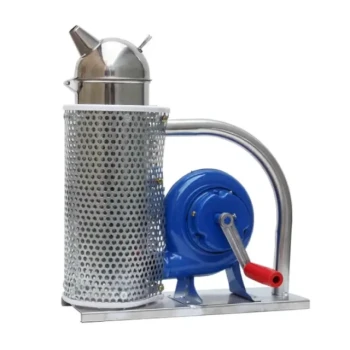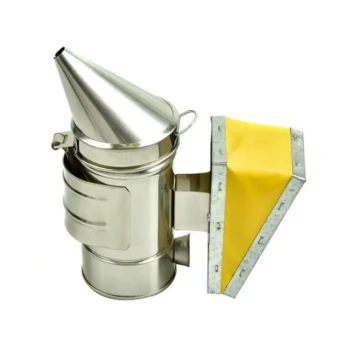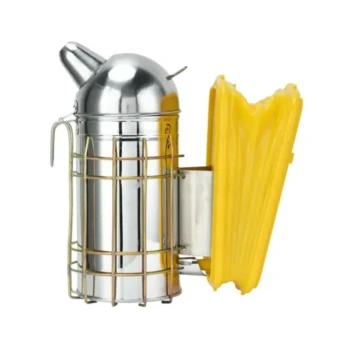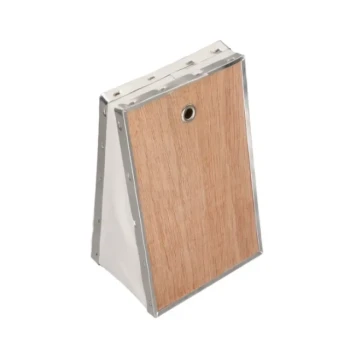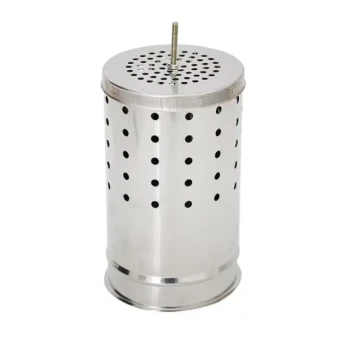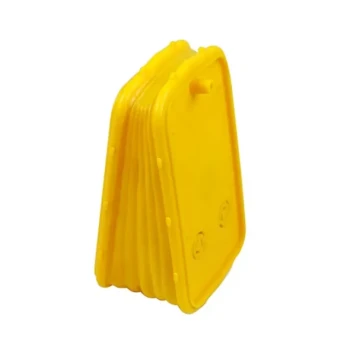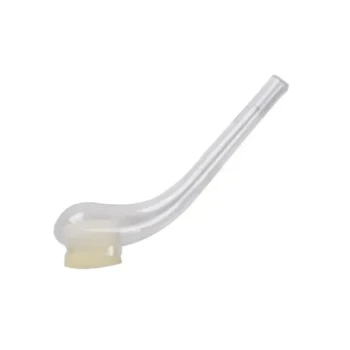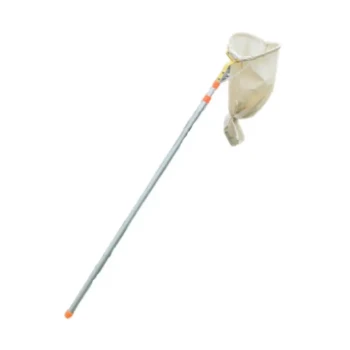A bee smoker is considered indispensable because it leverages the bees' natural instincts to create a calm, manageable environment for the beekeeper. By masking alarm signals and triggering a feeding response, the smoke dramatically reduces defensive behavior, making hive inspections safer and less stressful for both the beekeeper and the colony.
The smoker is not a tool of force; it is a tool of communication. It works by interrupting the bees' primary danger signals, allowing a beekeeper to perform necessary maintenance without causing panic or aggression within the hive.
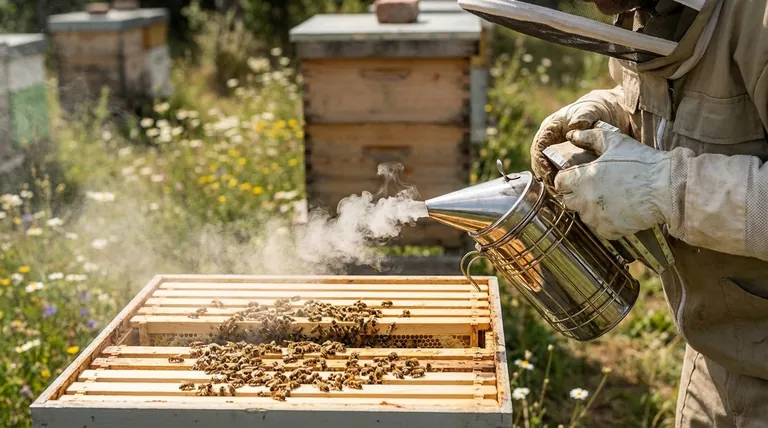
The Science of Smoke: How It Actually Works
To appreciate why a smoker is so effective, you must understand the two primary ways it influences honeybee behavior. It is a sophisticated manipulation of their biology, not a simple distraction.
Interrupting the Alarm System
Honeybees communicate threats using alarm pheromones. When a bee feels threatened or stings, it releases these chemical signals to alert the rest of the colony, instantly triggering a defensive response from guard bees.
Smoke effectively jams this communication channel. The particles in the smoke overwhelm the bees' sensory receptors in their antennae, making it difficult for them to detect the specific alarm pheromones.
Without a clear signal, a widespread defensive reaction is averted.
Triggering a Primal Instinct
Smoke also triggers a deeper, evolutionary response related to survival. For millions of years, smoke has meant one thing to bees: a forest fire is near.
Faced with the potential destruction of their home, the bees' priority shifts from defense to preservation. They immediately begin to gorge themselves on honey, preparing to abandon the hive and find a new location.
A bee with a full abdomen of honey is physically less able to flex its body to sting. This engorged, preoccupied state makes the entire colony significantly more docile.
Practical Application: When to Use a Smoker
Knowing how the smoker works is only half the equation. Knowing when and how much to use it is what separates a proficient beekeeper from a disruptive one.
Before You Open the Hive
Always begin by applying a few gentle puffs of cool, white smoke at the hive entrance. This serves as a calm announcement of your presence, initiating the feeding response before you even lift the lid.
During the Inspection
Once you remove the hive cover, apply a few more puffs across the top of the frames. This pushes the bees down gently and reinforces the calming effect as you begin your work.
Use smoke sparingly throughout the inspection only as needed. If you notice bees becoming agitated or flying at your veil, a small puff directed over the area is usually enough to settle them.
Key Scenarios for Smoker Use
While essential for routine inspections, a smoker is absolutely critical during more disruptive procedures. These include honey extraction, adding a new queen, or combining two separate colonies, all of which can be highly stressful events for the bees.
Understanding the Trade-offs and Misconceptions
A smoker is a powerful tool, but its misuse can be counterproductive or even harmful. True expertise lies in its judicious application.
Cool Smoke vs. Hot Smoke
The goal is to produce thick, cool, white smoke. Hot smoke or projected embers can burn the bees' wings and bodies, causing injury and agitation. Always ensure your smoker is lit correctly and producing the right kind of smoke.
Over-smoking is Counterproductive
More smoke is not always better. Blasting a hive with excessive smoke can create chaos, cause bees to become overly stressed, and can even taint the flavor of uncapped honey.
A Smoker Is Not a Substitute for Calm Handling
The best beekeepers know that a smoker is a partner to their own calm, deliberate movements. It creates an opportunity for a peaceful inspection, but jerky motions or crushing bees will still provoke a defensive response.
Making the Right Choice for Your Goal
Your approach to using a smoker should adapt to the temperament of the colony and the task at hand.
- If your primary focus is a routine health check: Use minimal smoke—just enough at the entrance and under the cover to prevent initial alarm.
- If your primary focus is a major hive manipulation (like a honey harvest): Be prepared to use smoke more consistently, but still gently, to maintain calm throughout the disruptive process.
- If your primary focus is managing a known aggressive colony: Use the smoker deliberately and confidently to establish control from the outset and ensure your safety.
Mastering the smoker transforms beekeeping from a potentially tense interaction into a collaborative and fascinating process.
Summary Table:
| Key Benefit | How It Works |
|---|---|
| Reduces Defensive Behavior | Smoke masks alarm pheromones, preventing a coordinated attack. |
| Triggers Calm Feeding Response | Mimics a forest fire, causing bees to gorge on honey and become docile. |
| Enables Safer Hive Inspections | Creates a manageable environment for routine checks and major manipulations. |
Ready to ensure safer, calmer hive inspections?
As HONESTBEE, we supply commercial apiaries and beekeeping equipment distributors with high-quality, reliable bee smokers and essential beekeeping supplies through our wholesale-focused operations. Ensure your team has the right tools to work effectively and safely.
Contact us today to discuss your wholesale needs and enhance your beekeeping operations.
Visual Guide
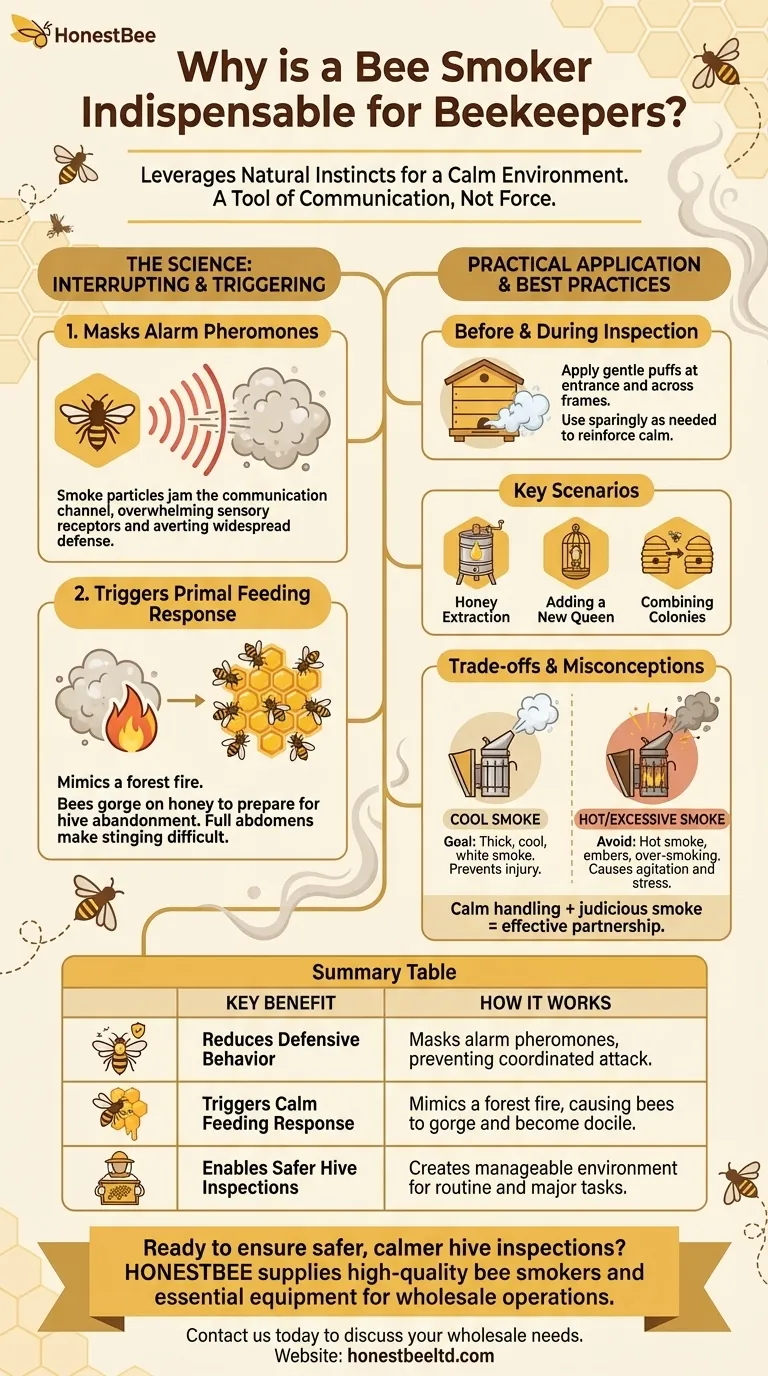
Related Products
- European Stainless Steel Bee Smoker for Honey Bee Hive
- Stainless Steel Honey Bee Smoker Hive and Honeycomb Smoker for Beekeeping
- Economy Galvanized Beekeeping Honey Bee Smoker for Wholesale
- Electric Bee Smoker European Style Bee Hive Smoker for Beekeeping
- Premium Traditional Copper Bee Smoker with Bellows
People Also Ask
- What are the features of a recommended bee smoker? A Guide to Safety, Durability & Performance
- How does a smoker help during hive inspections? The Key to Calm, Safe Beekeeping
- What are the key benefits of using a bee smoker? Master Hive Inspections Safely and Efficiently
- What are the advantages of a high-quality bee smoker? Achieve Calm, Confident Hive Management
- What are the benefits of cleaning a bee smoker? Ensure Hive Safety and Bee Health







